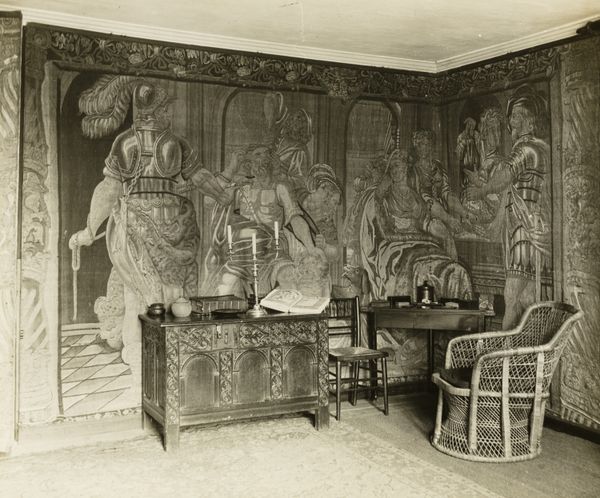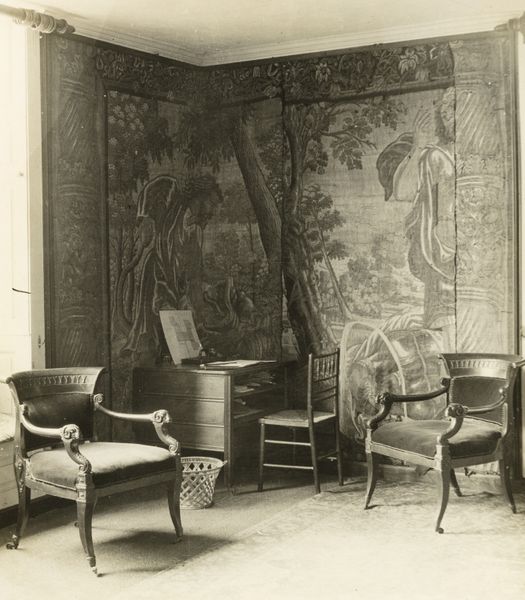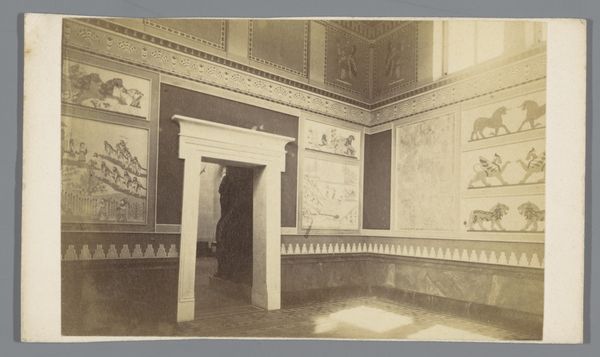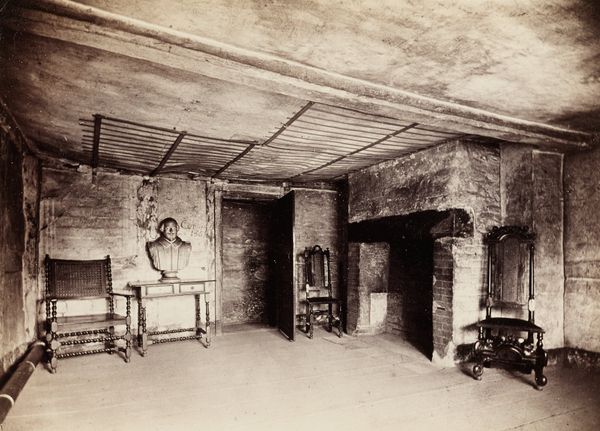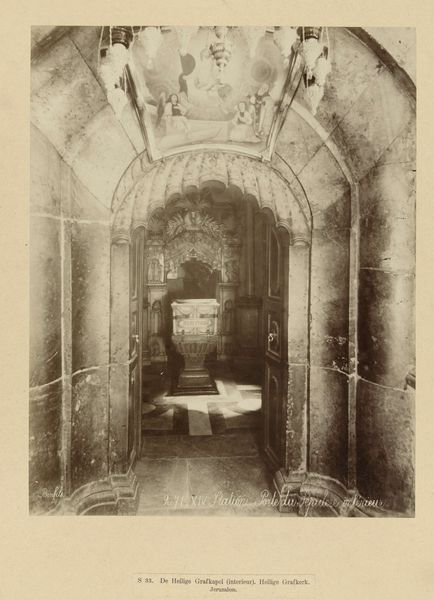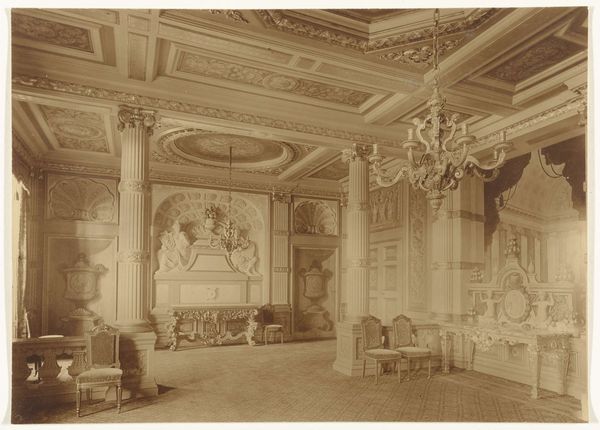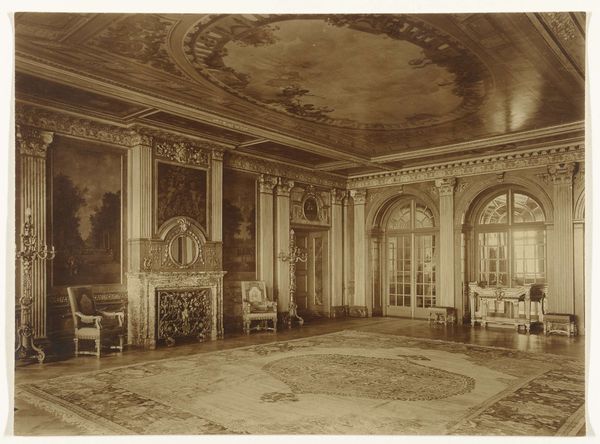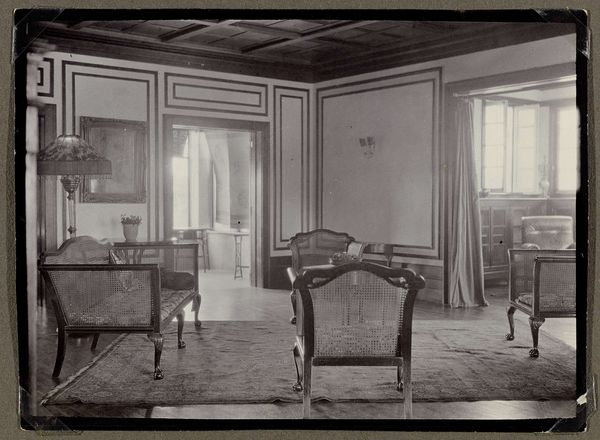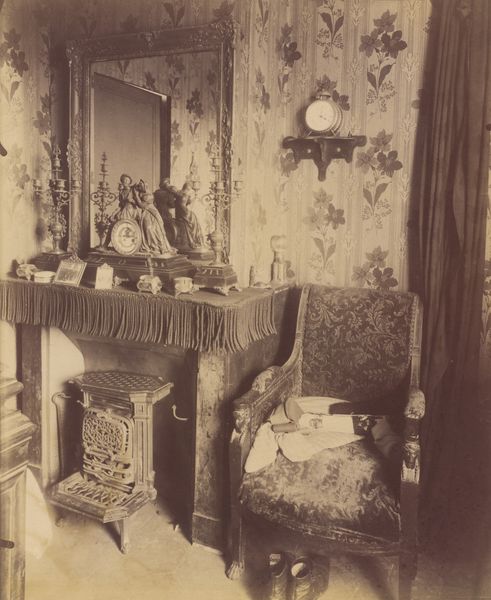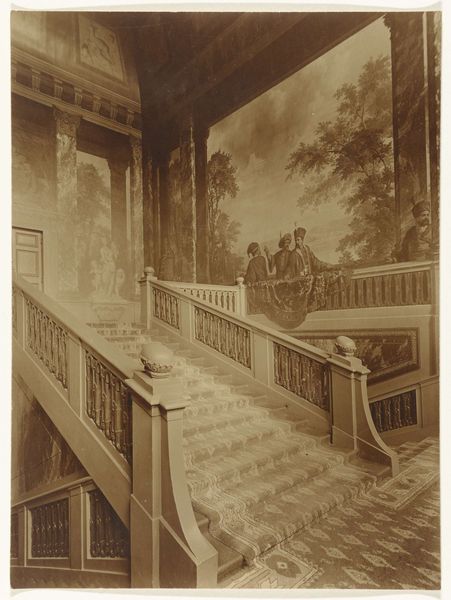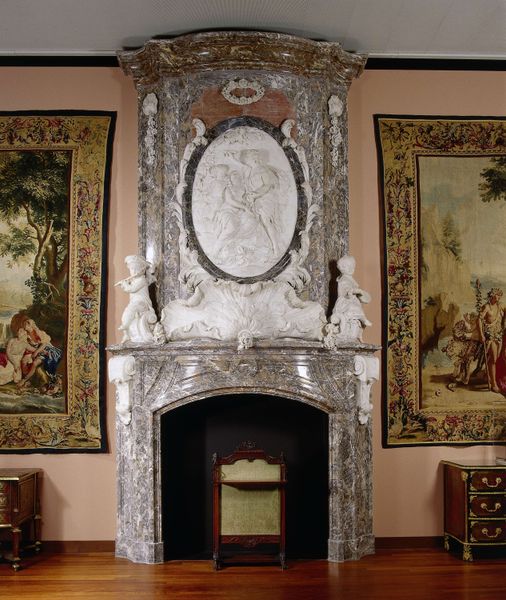
photography, glass, installation-art, architecture
#
16_19th-century
#
pictorialism
#
sculpture
#
historic architecture
#
traditional architecture
#
photography
#
glass
#
installation-art
#
genre-painting
#
architecture
Dimensions: 8.2 × 8.2 cm
Copyright: Public Domain
Curator: Here we have Frederick H. Evans's 1896 photograph, "Kelmscott Manor: In the Tapestry Room," now housed at the Art Institute of Chicago. Editor: The atmosphere is undeniably dreamlike. Everything is muted, softened almost, as if time itself is being viewed through a gauze. Curator: It's a captivating work, particularly considering its connections to William Morris and the Arts and Crafts movement. Morris actually leased Kelmscott Manor, which became a space deeply entwined with his artistic and social ideals. Editor: The tapestries, reproductions of Medieval scenes by Edward Burne-Jones, speak to Morris’s fascination with history and craftsmanship, but there’s also an interesting commentary on the male gaze present in those compositions. Are these simply romanticized portrayals, or do they function as more overt reflections of gender and power dynamics from the late 19th century filtered through Medieval imagery? Curator: That’s precisely what I find so intriguing! Evans captures not only the physical space, but also this tension between embracing the past and grappling with contemporary social issues. Editor: The way Evans photographs it creates an emotional distance. The light softens details, allowing the textures and surfaces to absorb and diffuse light. This softens the space, imbuing a quality of stillness. A sense of timelessness comes into play that draws the viewer back to history, but without the same intensity that the subjects within those painted tapestries may portray individually. Curator: This pictorialist approach also aligns with the broader artistic currents of the time, where photography sought recognition as a fine art, consciously differentiating itself from mere documentation by utilizing painterly effects and allegorical themes. We can read this, in context, as a subtle statement about artistic and class aspirations during an era when art and status were indelibly intertwined. Editor: The shadows, combined with this stylistic softness and visual weight of these inherited symbols, almost invite one to question whether these echoes are simply comforting remnants, or indicators of continuing conflicts that might resonate even in today's societies. Curator: Indeed. It encourages us to contemplate the roles art plays in perpetuating or challenging entrenched socio-political narratives, a concept particularly salient when examining historically inspired aesthetics. Editor: Ultimately, this exploration provides context and insight on the relationship between form, feeling, and underlying ideals. Curator: I concur. It offers an enduring meditation on the way places preserve and propagate cultural meanings.
Comments
No comments
Be the first to comment and join the conversation on the ultimate creative platform.
